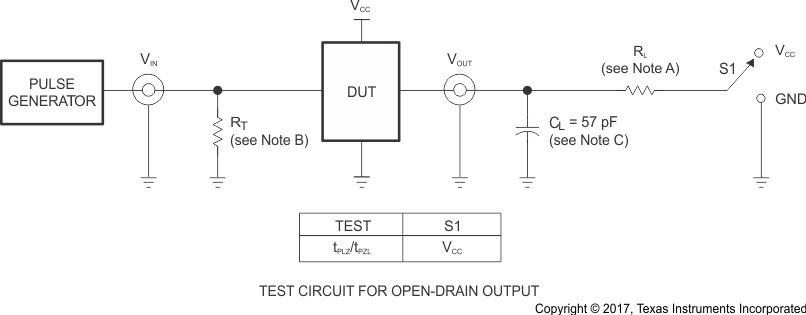JAJSLC9A February 2021 – August 2021 TCA9416
PRODUCTION DATA
7 Parameter Measurement Information
 Figure 7-1 Load Circuit for Pulse Duration, Propagation Delay, Output Rise-Time and
Fall-Time Measurement
Figure 7-1 Load Circuit for Pulse Duration, Propagation Delay, Output Rise-Time and
Fall-Time Measurement- RL = 1.35 kΩ
- RT termination resistance should be equal to ZOUT of pulse generators.
- CL includes probe and jig capacitance. CL = 50 pF when on the B-side.
- All input pulses are supplied by generators having the following characteristics: PRR ≤ 10 MHz, ZO = 50 Ω, slew rate ≥ 1 V/ns.
- tPLZ and tPHZ are the same as tdis.
- tPZL and tPZH are the same as ten.
- VCCI is the VCC associated with the input port.
- VCCO is the VCC associated with the output port.